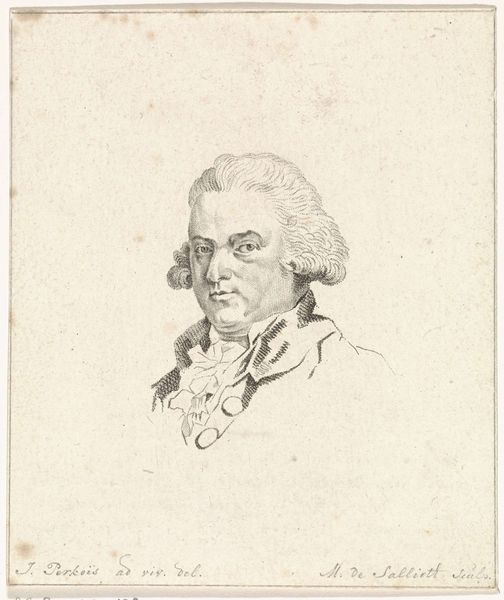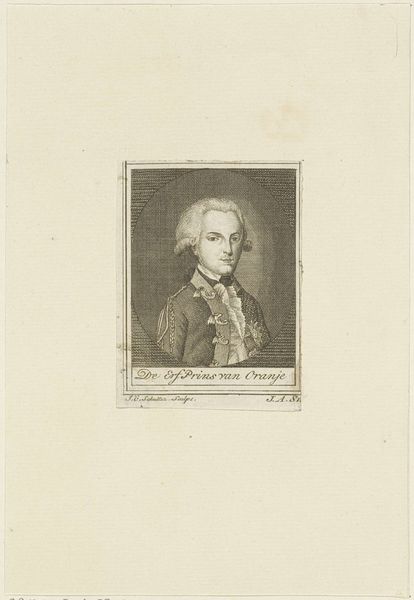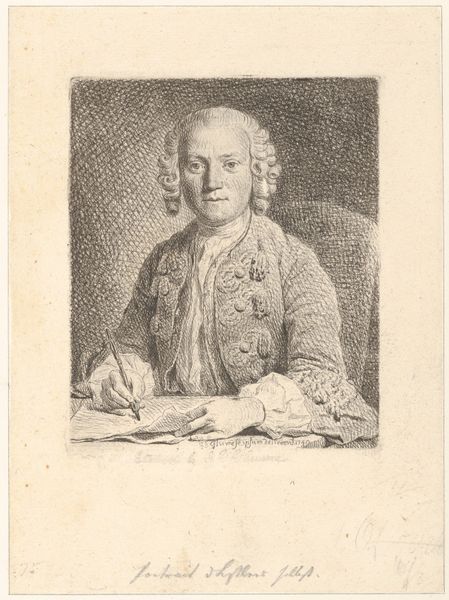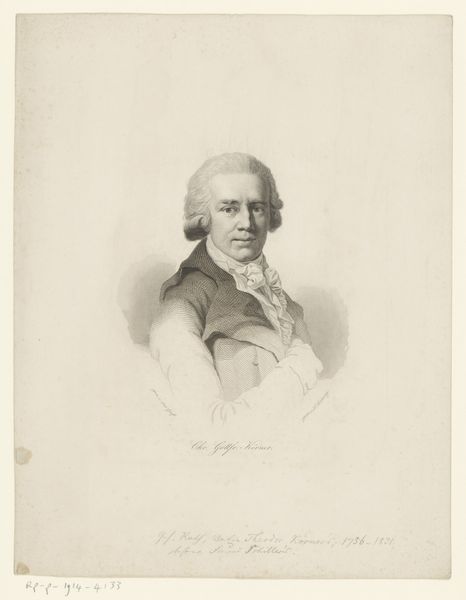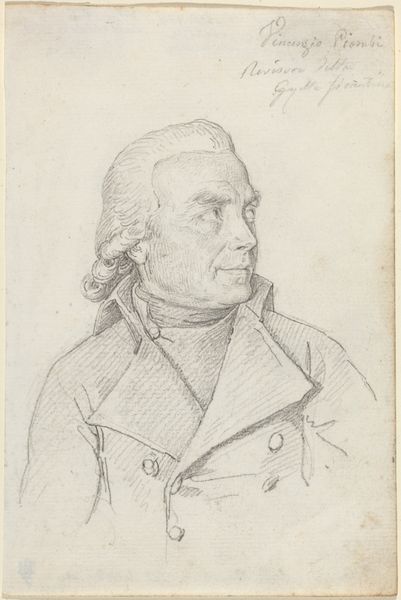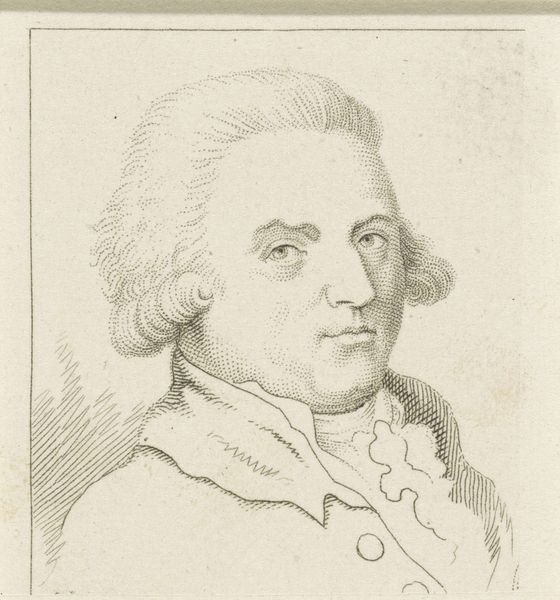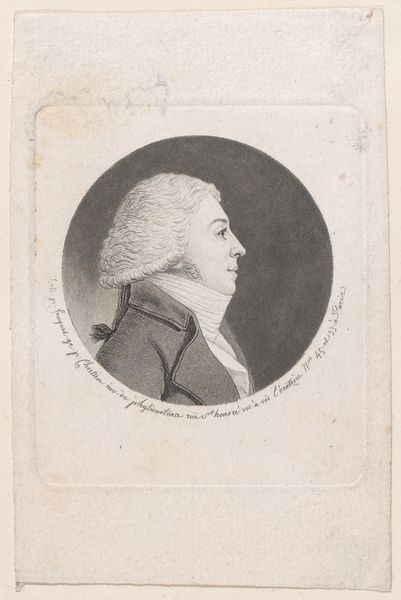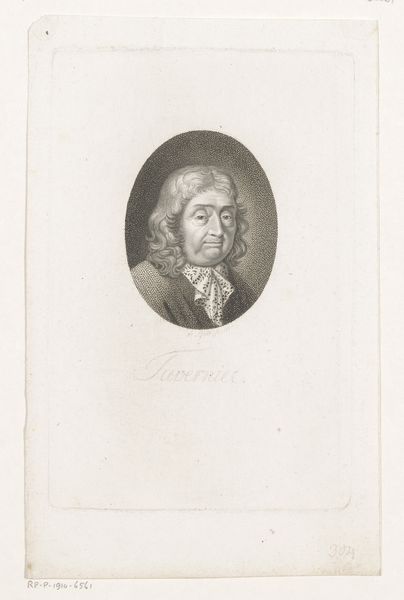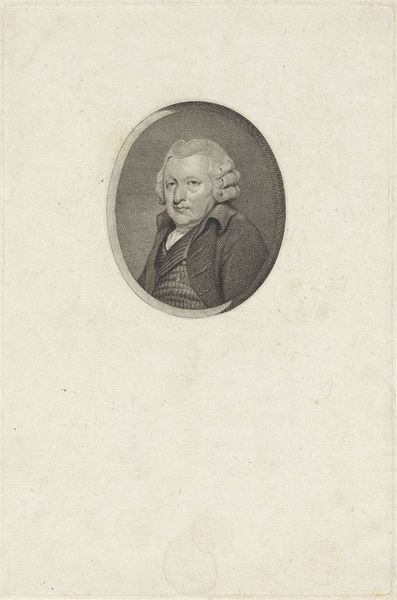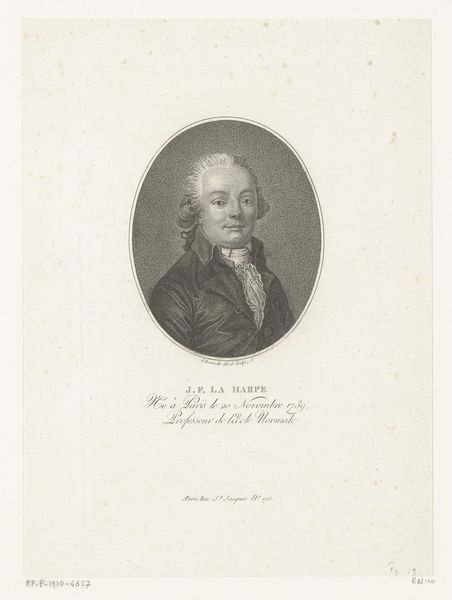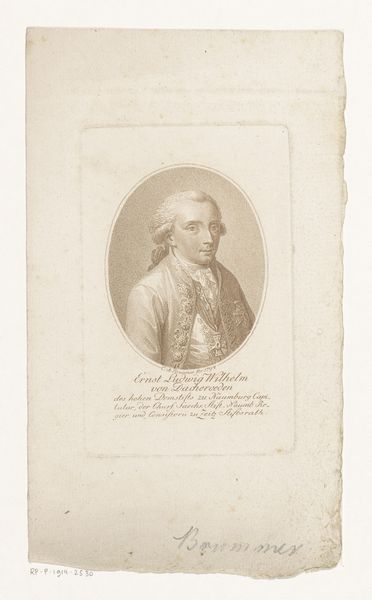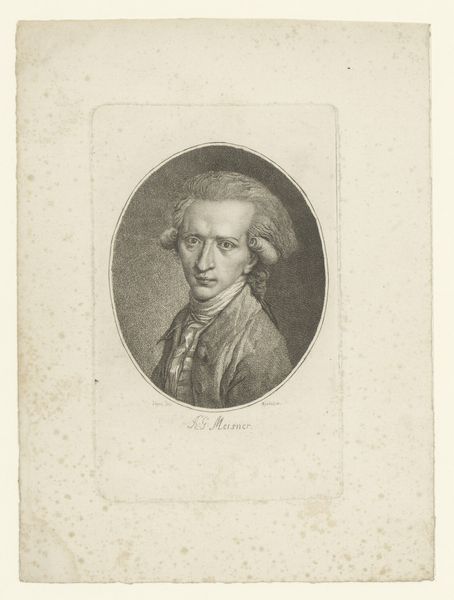
drawing, pencil
#
portrait
#
pencil drawn
#
drawing
#
neoclacissism
#
pencil
Dimensions: height 101 mm, width 81 mm
Copyright: Rijks Museum: Open Domain
Curator: Here we have a pencil drawing titled "Portret van Johannes Huibert Prins," created sometime between 1785 and 1864 by Gerardus Johannes Verburgh. Editor: My first impression is of restraint, almost a chilliness. The monochromatic palette contributes, but also the precise lines, that calculated pose. What do you make of the artistic approach here? Curator: Well, it seems to clearly echo Neoclassical aesthetics, doesn't it? Notice the emphasis on clarity, order, and that somewhat idealized portrayal – all hallmarks of the movement. There's a real focus on rationality and control here, reflected, quite literally, in the control of the pencil strokes themselves. Editor: Right, but consider what’s deliberately *omitted.* Color is gone, brushstrokes replaced. Why choose a medium so… economical? It speaks to the values of the era, I think. Perhaps a commissioned work on a strict budget? The simplicity allows for quicker reproduction and broader accessibility. Curator: Possibly. Pencil portraits also afforded a level of intimacy – they weren't as ostentatious or grand as oil paintings. Think about what portraiture represented for the sitter, and the social values being expressed here – status, yes, but also perhaps an appeal to enlightened virtues. Editor: Or simply affordability? Let's not overlook the market forces at play. New materials became more accessible and were readily available during that time; this would also make techniques like drawing more common. Curator: A point well taken! But I think there's a deeper resonance too. Note his placid expression. Does it convey composure, strength, intellect, and self-command – qualities the Neoclassical artists often associated with the ideal citizen. Editor: Perhaps it reveals something about the economic and political anxieties of the time; portraiture that seems too grandiose could provoke negative feelings amongst emerging merchants. Curator: Intriguing! It makes one wonder, what expectations the artist negotiated while creating a compelling image that speaks to the personal, the social, and perhaps even to our own very different, moment? Editor: Indeed, by examining the materiality and social context, we might get a little closer to understanding not only how art gets made, but how it *means*.
Comments
No comments
Be the first to comment and join the conversation on the ultimate creative platform.
